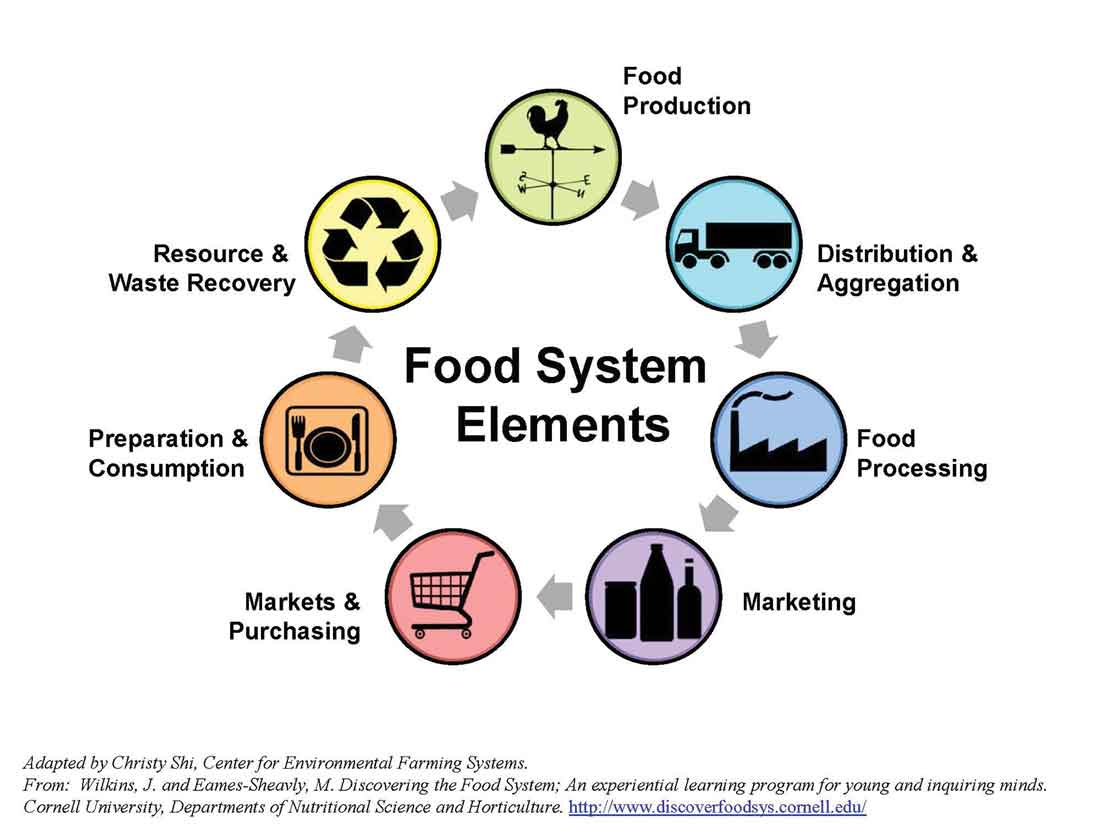Broken Chains
Thanksgiving is my favorite, least materialistic holiday. Presence is required, presents are not. It is a time of connection, something we have dearly missed over the years of pandemic isolation. There is not much warmth in a virtual hug, however heartfelt it is. I can’t wait!
The celebratory heart of Thanksgiving Day is the gathering of family and friends to share an abundant, sumptuous meal. Whether in a formal, sit-down setting or a potluck buffet feast, the food ends up on our plates after a long, complicated journey to our tables. What we call a supply chain includes the whole journey that a product like food makes from its origins to its final destination. The World Economic Forum defines a supply chain as “the network of people, companies and modes of transport that order and produce goods and deliver them to warehouses, shops or even right to our doors.”
A Little History of the Supply Chain
According to schwab.com, “Starting in the 1970s, the rise of the shipping container revolutionized global trade. These standard-sized corrugated steel boxes can stack on ships and fit on truck beds—and dramatically lowered the cost and time to transport goods. This enabled businesses to shift production to lower-cost destinations overseas, and source materials and components from just about anywhere. Globalism…, while these developments helped make many goods more affordable, the system wasn’t prepared for the shock of COVID.”
During the COVID supply chain disruption in the USA, consequences have included shortages (toilet paper), rationing (only one to a customer), prioritization (hand sanitizer over baby wipes) and reduction of stock items (baby formula). Suppliers closed or downsized. There were huge labor layoffs as production waned. International shipping was halted, diminishing supply from international sources.
A Global Disruption Turns Very Dangerous
We can be very thankful on Thanksgiving that we still had food to eat during COVID here in the USA. My son, Dr. Ben LaBrot and daughter, Sky LaBrot, have run a medical relief non-governmental organization (NGO) called Floating Doctors (FD)for the last eleven years. In Panama, where Floating Doctors continued servicing 24 very remote island communities during the pandemic, FD discovered severe weight loss among the Ngabe Bugle people. They were starving! There was no food. Along with medical care, FD was able to deliver beans/rice/cooking oil/ baby formula—over 750,000 meals—thanks to our supporters. Those communities were saved, but all around the world, many people were, and still are, suffering from starvation. The Russian/Ukraine war is a disaster for the world’s food supply.
Last June, UN Deputy Secretary-General Amina Mohammed gave a dire warning of the unprecedented world hunger crisis we are facing. “We must stabilize global markets, reduce volatility and tackle the uncertainty of commodity prices. There can be no effective solution to the global food crisis without reintegrating Ukraine’s food production, as well as the food and fertilizer produced by the Russian Federation into world markets—despite the war. To avert a food availability crisis in 2023, we must restore fertilizer availability, especially for small holder farmers now.”
It’s not only about food. In the South China Seas, shipping supply chains have been disrupted by Chinese war ships conducting military exercises in the Taiwan Strait. This and the world’s soaring demand for electronics have disrupted the delivery of semi-conductors used in digital equipment all over the world. There is a serious computer chip shortage. This affects production and repair of cars, computers, cell phones, TVs, medical devices, anything digital, even cryptocurrencies, What a mess! (Thank goodness for Intel, a chip maker, who has factories here in the USA!)
In the United States, so far the most dangerous and stressful shortage we have had because of supply chain disruption has been the baby food debacle. This winter, it will be the unaffordability of heat and heating oil supply issues. We are currently experiencing shortages in the medical sector, including medications like Ozempic for diabetics and contrast material for CT scans and MRI’s and chips for CPAP machines. Compared to the rest of the world, however, we are very lucky.
What to Do?
Just as ecology is a science describing the inter-connection of all life on earth, so supply chain economics is a way to understand and tread carefully through the inter-connection of global trade. To me, this suggests two things.
First, our approach to energy and international trade policies must be thoughtful and long-range. The consequences of our economic decisions need to be mapped, just as we map the environmental consequences of policies regarding our land and water resources.
Second, we need to increase our domestic development and manufacturing to the point where, in the event of global disturbances, we can be self-sufficient. The supply chain crisis is a perfect place to blend the best of the true conservative and true liberal ideas to find balance for our country’s economic policies.
On that note, I’m going to harvest some of our delicious Anna apples and make a self-sufficient pie for the gathering of the clan. When we sit down to eat, I will be so thankful to all along the food chain who made our dinner possible.
Happy Thanksgiving, dear readers! A prayer for stable supply chains for all the peoples of this earth! A prayer for all things to be connected in peace, love and balance!
Vamos a ver.









